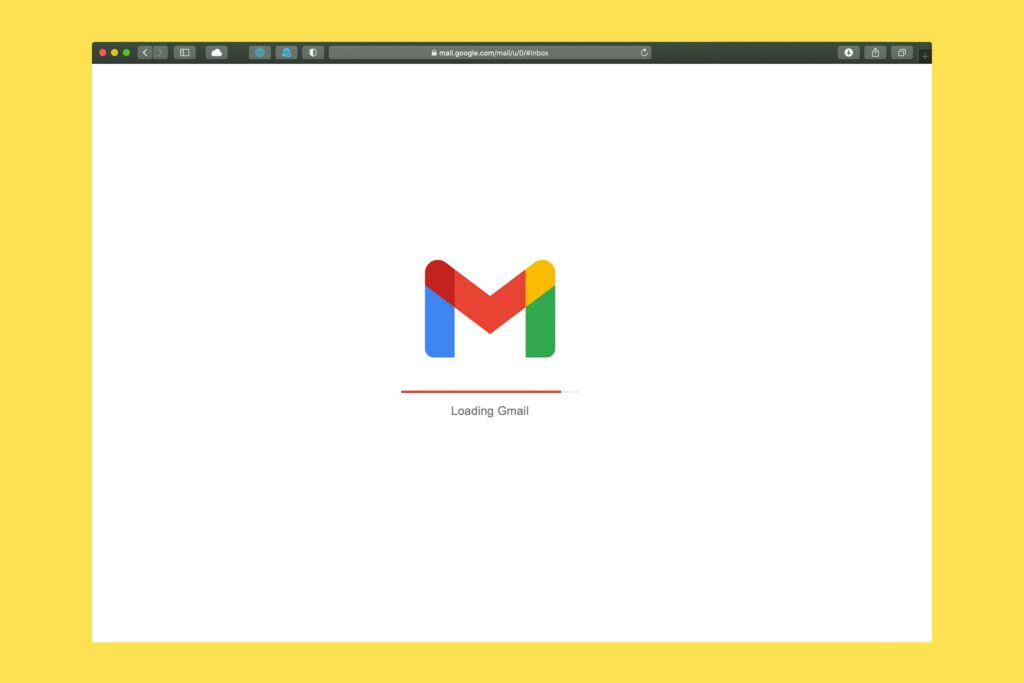Have you ever felt like you’re drowning in a sea of emails, desperately searching for that one important message you didn’t delete? You’re not alone. In fact, you’re part of a global tribe of digital hoarders, clinging to every newsletter, receipt, and ‘urgent’ request from three years ago. But here’s the kicker: the solution to your email woes has been right under your nose this whole time. It’s called the archive, and it’s about to become your new best friend. So, let’s figure out how to find archive in Gmail.

The Digital Dilemma: Lost in the Email Labyrinth
Picture this: it’s Monday morning, and your boss asks for that critical email from last month. You know you’ve seen it, but where? As you frantically scroll through your inbox, your heart rate increases, and your productivity plummets. Sound familiar?
This scenario happens in offices and homes across Australia (and the world) every day. We’re all guilty of it – letting our inboxes become digital dumping grounds, a chaotic mix of important documents, half-read newsletters, and that chain email your aunt sent you in 2015.
But here’s where it gets interesting: the solution isn’t about deleting everything in sight or spending hours manually sorting through emails. It’s about mastering one of Gmail’s most powerful yet underutilised features: the archive.
Unravelling the Mystery: What Exactly is Gmail’s Archive?
Before we discuss how to find your archived emails, let’s clarify a common misconception. The archive isn’t some mystical place where emails go to die. It’s more like a well-organised storage unit for your digital life.
When you archive an email in Gmail, you’re telling Google, “I don’t need this in my face right now, but I might want it later.” The email disappears from your inbox but hasn’t been deleted. It’s still there, waiting patiently for the day you need it again.
But here’s the real magic: unlike the cluttered ‘storage unit’ under your bed (we all have one), Gmail’s archive is searchable, organised, and doesn’t gather dust. It’s like having a personal assistant who files away your documents and can retrieve them at a moment’s notice.
The Archive vs. Delete Showdown
Now, you might be thinking, “Why not just delete emails I don’t need?” And that’s a fair question. But let me ask you this: have you ever deleted an email only to realise a week later that you desperately need the information it contained?
Archiving is like a safety net for your digital life. It keeps your inbox clean without the finality (and potential regret) of deletion. Think of it as the difference between storing your winter clothes in the attic and setting them on fire. Both get them out of your closet, but only one allows you to use them again.
How to Find Archive in Gmail:
So, you’re sold on the idea of archiving. Great! But how do you find these archived emails when you need them? Don’t worry; I’ve got you covered. Here are three foolproof methods to unearth your archived gems:
The Search Bar: Your New Best Friend
Remember that personal assistant we talked about earlier? Well, Gmail’s search bar is even better. Simply type in a keyword, the sender’s name, or even a rough date, and voila! Your archived email will appear faster than you can say “digital organisation.”
All Mail: The Archive Motherlode
If you’re in the mood for some email archaeology, head to the ‘All Mail’ folder. It’s like the Library of Alexandria for your emails – everything you’ve ever sent or received, including your archived items, lives here.
Advanced Search Operators: For the Email Power User
Ready to level up your search game? Try using search operators like ‘has:nouserlabels’ to find archived emails without labels. It’s like having an X-ray vision for your inbox.
Levelling Up: Advanced Techniques for Archive Mastery
Now that you’ve got the basics down, it’s time to take your archive game to the next level. These advanced techniques will turn you from an email amateur to a bona fide archive aficionado:
Filters: Your Personal Email Butler
Set up filters to automatically archive certain types of emails. It’s like having a butler who sorts your mail before you even see it. “Junk mail, sir? Straight to the archive!”
Labels: Colour-Coding for Your Digital Life
Combine archives with labels for ultimate organisation. It’s like colour-coding your wardrobe, but for your digital life. “Red for urgent, blue for bills, and purple for those emails from your oversharing colleague.”
Keyboard Shortcuts: The Speed Demon’s Secret Weapon
Master keyboard shortcuts for lightning-fast archiving. Press ‘e’ to archive an email without even touching your mouse. It’s so fast that you’ll feel like you’re in “The Matrix” of email management.
Dodge These Bullets: Common Archive Pitfalls
Even email ninjas can fall into these common traps. Here’s how to avoid them:
- The Archive/Delete Mix-Up: Remember: archive is not deleted. You might lose emails forever if you’re trigger-happy with the delete button. When in doubt, archive.
- The “I’ll Archive Later” Syndrome: Procrastination is the enemy of organisation. Make archiving a habit, not an afterthought.
- The “Needle in a Haystack” Effect: If you archive everything without rhyme or reason, finding specific emails can be like looking for a needle in a haystack. Use labels and smart search techniques to keep things findable.
The Psychology of Digital Clutter: Why Your Messy Inbox is Stressing You Out
Here’s where it gets really interesting. That cluttered inbox isn’t just an organisational issue – it’s a psychological one. Studies have shown that digital clutter can be just as stressful as physical clutter. Whenever you open your inbox and see hundreds of unread emails, your brain gets a little stressed.
But here’s the good news: effective archiving can be a form of digital decluttering. It’s like Marie Kondo-ing your email. By moving emails out of your immediate view, you’re creating a sense of order and control. And let’s be honest, in today’s chaotic world, we could all use a little more of that.
The Future is Here: AI and the Evolution of Email Management
Just when you thought you had this email thing figured out, technology throws us another curveball. Artificial Intelligence is set to revolutionise how we manage our emails. Imagine an AI that can predict which emails you’ll want to archive based on your past behaviour. Or one that can summarise long email threads so you can decide whether to keep or archive them.
These aren’t just pipe dreams. Gmail is already implementing AI features to help with email organisation. The ‘Smart Reply’ and ‘Smart Compose’ features are just the beginning. In the future, we might have AI assistants who manage our entire digital lives, making decisions about what to archive, delete, or flag for our attention.
But here’s the catch: as these technologies evolve, the fundamental principles of good email management will remain the same. Understanding how to use features like archives effectively will give you a head start in this brave new world of AI-assisted email.
The Final Word: Your Journey to Inbox Zero Starts Now
So, there you have it. The archive feature in Gmail isn’t just a tool – it’s a gateway to a more organised, less stressful digital life. It’s the difference between drowning in emails and surfing the waves of productivity.
Remember, mastering your Gmail archive isn’t just about finding old emails. It’s about taking control of your digital life, reducing stress, and setting yourself up for success in an increasingly digital world.
The journey to Inbox Zero starts with a single archive. So why not start now? Go on, open your Gmail. Look at that overstuffed inbox. Now, take a deep breath and start archiving. Your future self will thank you.
And who knows? Maybe one day, when the robots take over, you’ll be able to say, “At least my Gmail is organised.” Now, wouldn’t that be something?
Frequently Asked Questions:
Is there a limit to how many emails I can archive?
Gmail gives you 15GB of free storage across Gmail, Google Drive, and Google Photos. As long as you’re under that limit, archive away!
Can I set up rules to automatically archive certain emails?
Yes, you can use Gmail filters to archive emails based on specific criteria automatically.




